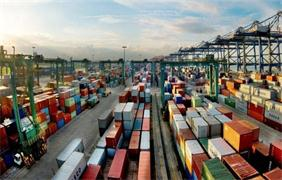Starting from the second half of 2018, the congestion in U.S. ports is very serious under the condition of full-load operation due to the surge of imported goods, and the situation has not improved until now.
Los Angeles and Long Beach are the largest container trade centers in the United States. Recently, the congestion in the storage yard is still very serious. The time limit for picking up and returning containers is seriously affected. The voyage of the inland point of the United States ( via Los Angeles ) will also be extended. Due to the inability to lift and return empty containers, the owner's dissatisfaction is rising, while thousands of dollars of detention and demurrage fees are accumulating.

A few days ago, STG Logistics, a leading logistics service company in the United States, analyzed three reasons for the continued congestion in its announcement to customers.
The shortage of labor during the New Year holidays further worsened the congestion at Los Angeles - Long Beach Port.
Traffic congestion at the docks is exacerbated by Christmas and New Year holidays, which are non-working days stipulated in the dock contract. As a result, experienced dockers usually take vacations before and after vacations, resulting in severe labor shortages and the use of a large number of part-time workers, who are often inexperienced and inefficient.
Tariff worries
The second factor is the Trump administration's concern about tariffs on imports from China and China's concern about tariffs on US products. Importers are trying to break the 10 % - 25 % tariff concern through the surge in early spring shipments.
Due to the uncertainty caused by Sino - US trade frictions and the possibility of imposing tariffs on a variety of imported consumer goods, importers are grasping at imported goods. The surge in incoming goods has further strained the already tight storage space near Los Angeles and Long Beach ports. Container throughput in Los Angeles and Long Beach reached record levels.
Finally, there is the delay and congestion of empty containers.
When the terminal is at full load ( utilization rate is 80 % ), the containers will exceed the storage capacity of the storage yard and be stacked in an unspecified area. This usually results in freight stations refusing to accept the return of empty containers, while truck drivers usually need to unload empty containers before picking up loaded imported containers.
When truck drivers cannot unload empty containers and load imported containers, productivity will be halved, resulting in an artificial shortage of drivers.
In addition, when truck drivers cannot make an appointment to pick up imported goods, the container will be affected by demurrage fees and detention fees if it stays at the dock longer than the stipulated free time. This has led to a shortage of trucks in southern California because trucks are either stuck in empty containers or have been idle in importers' warehouses, which cannot handle loaded imported containers because they are full.
Combined with the above factors, this has caused serious congestion, delay and additional costs to the operations of Los Angeles and Long Beach ports.



